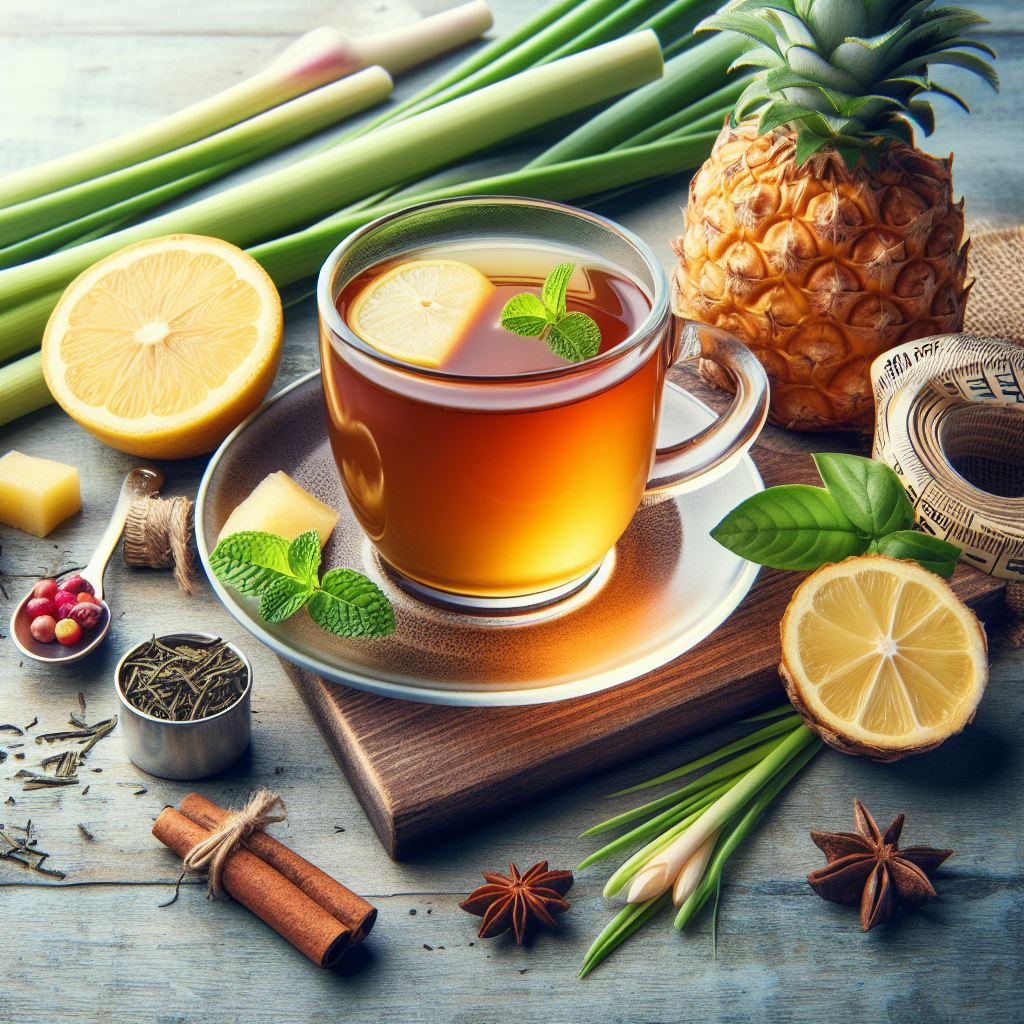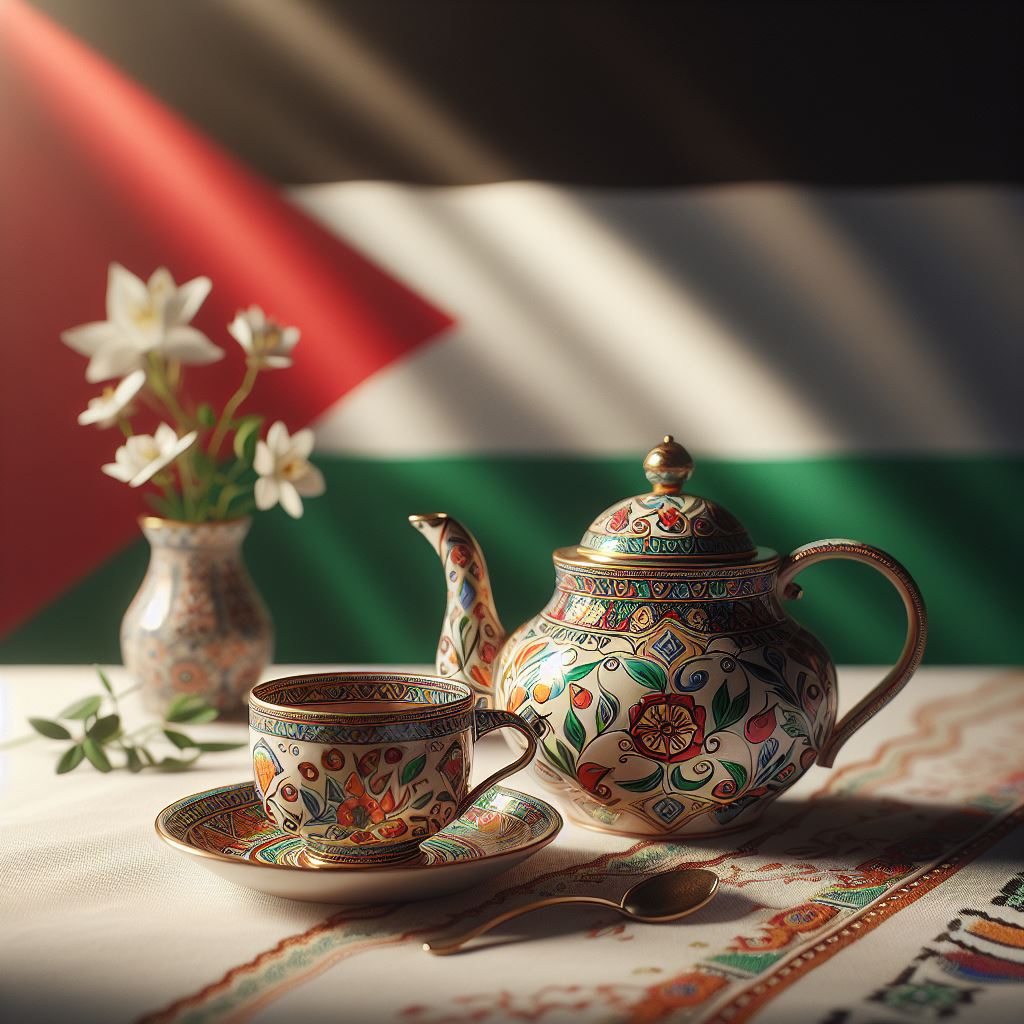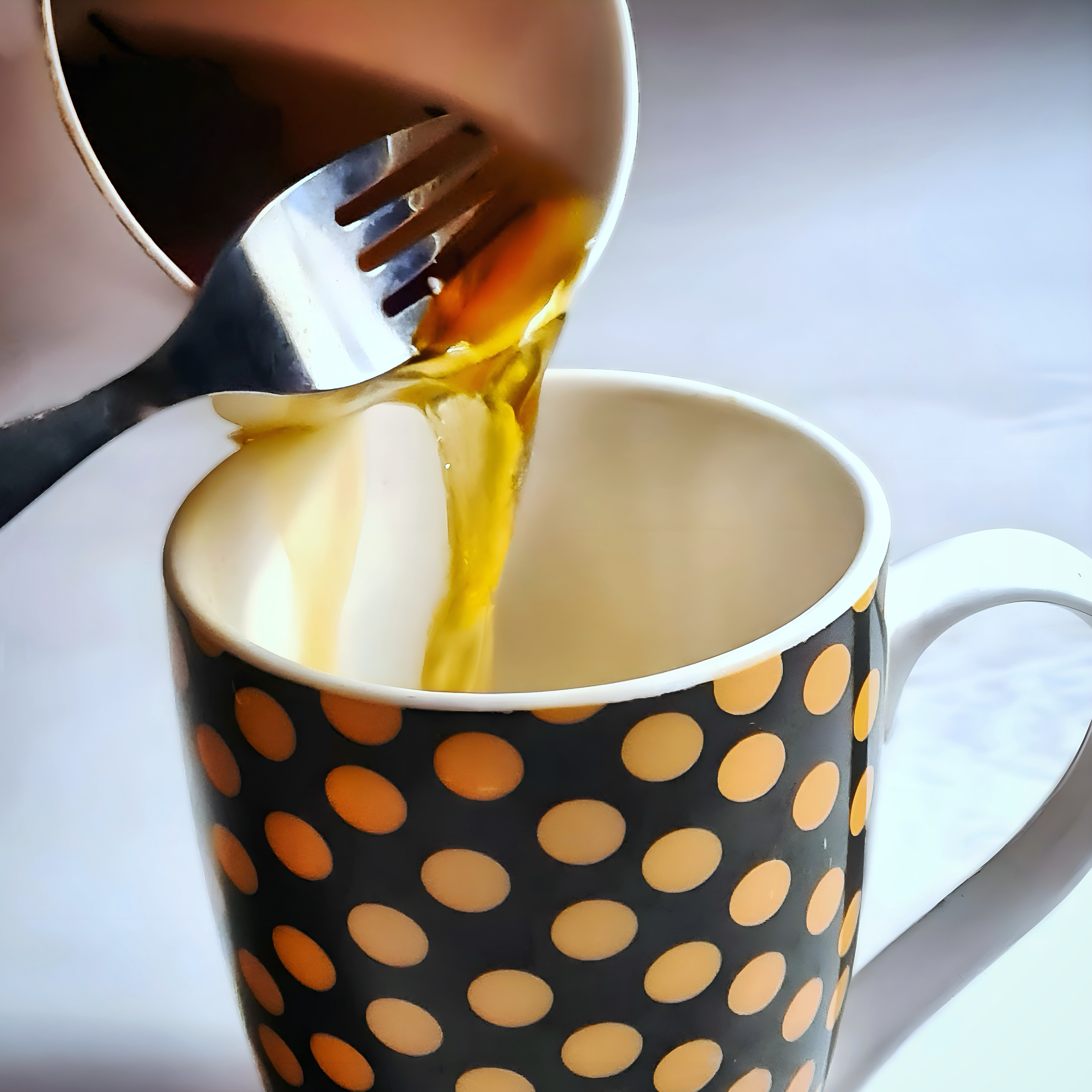Tea is one of the most popular and beloved beverages in the world. It has been enjoyed for thousands of years, across different cultures and regions. But have you ever wondered how tea is made? How does a simple plant turn into a delicious and aromatic drink? In this blog post, we will explore the captivating journey of tea, from its cultivation, tea processing, to the moment it touches our lips.

The Origins of Tea
Tea is believed to have originated in China, where legend has it that Emperor Shen Nong discovered it by accident when a leaf fell into his boiling water. Since then, tea has become an integral part of Chinese culture, art, and philosophy. Tea was also introduced to Japan, India, and other Asian countries through trade and cultural exchange.
From Asia to Europe
Later, tea spread to Europe, where it was initially a luxury item for the wealthy and the royalty. Tea became more accessible and popular after the British East India Company established a monopoly on the tea trade in the 18th century. Tea also played a role in the American Revolution, when colonists protested against the British tea tax by dumping tea into the Boston Harbor. Learn more about The Boston Tea Party: A Historic Event that Brewed a New World of Tea.

Today, tea is grown in over 50 countries around the world, with China, India, Kenya, Sri Lanka, and Turkey being the top five producers. Each region has its own distinctive style and flavor of tea, influenced by factors such as climate, soil, altitude, and processing methods.
Cultivation and Harvesting Methods
Tea is derived from the leaves of Camellia sinensis, an evergreen shrub that thrives in warm and humid climates. Tea plants prefer high altitudes, where they can benefit from cooler temperatures, abundant rainfall, and rich soil. Some of the best tea-growing regions are located in the mountainous areas of China, India, Japan, Taiwan, and Nepal.
There are many varieties of tea, such as green, black, oolong, white, yellow, and pu-erh. These varieties are determined by the degree of oxidation that the leaves undergo during processing. Oxidation is a chemical reaction that changes the color and flavor of the leaves. Generally speaking, green tea is unoxidized or lightly oxidized, black tea is fully oxidized, and oolong tea is somewhere in between.
The quality and flavor of tea also depends on the harvesting method and the selection of leaves. The most prized part of the tea plant is the bud or the tip, which contains the highest concentration of flavor and aroma compounds. The bud is often combined with one or two young leaves to form different grades of tea. There are 4 common forms of tea harvesting:
• Hand Plucking:
One of the most traditional and refined methods of harvesting tea is hand-plucking, which involves picking individual leaves or small stems from the tea bush. This method ensures that only the best and youngest leaves are selected, which are usually the top two leaves and the bud at the tip of the shoot. Hand-plucking also preserves the integrity and shape of the leaves, which affects the flavour and aroma of the tea. Hand-plucking is often used for high-quality teas, such as green and white teas, that require minimal processing

• Clutch-and-Tear
Another method of harvesting tea is clutch-and-tear, which involves grabbing a handful of leaves and tearing them off from the plant. To do this, the bottom of the twig is grabbed and the leaves are clutched in an upward motion. This method is faster and easier than hand-plucking, but it also results in more damage and bruising to the leaves, which affects the quality and appearance of the tea. Clutch-and-tear is often used for lower-quality teas, such as black teas, that require more processing.

• Harvesting Scissors
A third method of harvesting tea is using harvesting scissors, which are special scissors that have a basket attached to them to collect the cut leaves. This method is similar to hand-plucking, but it allows for more speed and efficiency. Harvesting scissors are often used for medium-quality teas, such as oolong teas, that require moderate processing.

• Mechanical Harvester
A fourth method of harvesting tea is using mechanical harvesters, which are machines that can cut and collect large amounts of leaves in a short time. This method is the most convenient and economical, but it also results in the lowest quality and consistency of tea. Mechanical harvesters are often used for mass-produced teas, such as tea bags, that require extensive processing.

As you can see, harvesting tea leaves is not a simple matter. It requires knowledge, skill, and judgment to choose the best method and equipment for each type of tea. The way the leaves are harvested affects not only the quantity, but also the quality of the tea.
Tea Processing Steps
After harvesting, the tea leaves undergo a series of steps to transform them into the final product. The most common steps are withering, rolling, oxidizing, and firing. Although, some stages may differ depending on the variety of tea. Here are the main steps involved in tea processing:
1. Withering
Withering is the process of reducing the moisture content of the fresh leaves by exposing them to air. This makes the leaves softer and more pliable for rolling. Due to the loss of moisture and beginning of oxidisation, chemical changes are initiated in the leaves, releasing enzymes. This process can affect the flavour and aroma of the tea.

Withering can be done indoors or outdoors, depending on the weather and the type of tea. However, most commonly, the leaves are laid out on large wire mesh trays in a room overnight. With the added help of modern technology, large withering fans are usually used to speed up the process. The majority of teas undergo the withering stage, except for some white teas that are only sun-dried.
2. Rolling
Rolling is the process of breaking or bruising the withered leaves to squeeze out more moisture, releasing even more enzymes and tea juices. This prepares the leaves for oxidation and causes the tea juices and other compounds to develop flavour. This stage also shapes the leaves into different forms which can affect the strength and increase preservation.
Rolling can be done by hand or by machine, depending on the type and quality of tea. However, today, it is most commonly undertaken by rolling machines. Whereas, hand-rolling is usually used to create tea pearls. Most teas undergo rolling, except for some white teas that are only sun-dried.

Some green teas are not rolled. However, if they are, an additional drying stage will be undertaken before rolling. The leaves are passed through a heated machine to further reduce the moisture, halting the oxidation for the rolling stage. This is sometimes called “killing the green” or “first drying”.
3. Oxidation (fermenting)
Tea oxidation (or fermenting) is the process of exposing the rolled leaves to oxygen to change their colour and flavour. Oxidation is caused by the enzymes in the leaves that react with oxygen and other substances in the air. This process can be controlled by adjusting the temperature, humidity, and duration of exposure. Oxidation is the most important step in tea processing, as it determines the type and quality of tea. Different types of tea have different degrees of oxidation: white tea has minimal oxidation (less than 5%), green tea has no oxidation (0%), yellow tea has slight oxidation (5-10%), oolong tea has partial oxidation (8-80%), black tea has full oxidation (100%), and dark tea has post-oxidation (after drying) .
The rolled leaves are laid out over the floor or on tables to oxidise for up to 5 hours. After the oxidation stage, the leaves will have changed in appearance dramatically compared to when they began processing. They will have reduced in size and darkened in colour, releasing a distinct aroma.

4. Drying
Drying is the process of removing the remaining moisture from the oxidised leaves by applying heat. This stops the oxidation process and preserves the colour and flavour of the tea. Drying can be done by using ovens, hot air, fire, steam, or sunlight, depending on the type and quality of tea. Drying can also affect the appearance and aroma of the tea further. Once they have been dried, the tea leaves will retain their flavour until brewed. All teas undergo drying, except for some dark teas that are fermented after drying .

The green teas which have already been through a drying stage prior to rolling will undergo this second drying stage, sometimes even a third.
5. Cleaning
Cleaning is the process of removing any impurities or foreign materials from the dried leaves by sieving or sorting. This improves the quality and appearance of the tea. Cleaning can be done by hand or by machine, depending on the type and quality of tea.

Most teas undergo cleaning, except for some dark teas (pu-erh) that are intentionally fermented and aged with microorganisms or insects. After drying, pu-erh tea is pressed into bricks or cakes to age.
6. Grading
Grading is the process of classifying the dried leaves based on their size, shape, colour, or quality. This helps to determine the price and market value of the tea. Grading can be done by using different criteria or standards, depending on the type and origin of tea. Some common grading terms are whole leaf, broken leaf, fannings, dust, pekoe, orange pekoe, flowery pekoe, etc. Not all teas are graded, as some teas are sold as single-origin or unblended teas.
7. Sorting
Sorting is the process of separating or grouping the graded leaves based on their characteristics or preferences and packed into aluminium lined sacks (to stop heat and moisture from affecting the quality). This helps to create different varieties or blends of tea that suit different tastes or occasions. Sorting can be done by using different methods or techniques, such as mixing, flavouring, scenting, ageing, etc. Not all teas are sorted, as some teas are sold as pure or single-origin teas .
Some green teas are polished before packing to give it a shine. However, this is just for appearance and does not affect the overall taste
How Processing varies for Each Type of Tea
White Tea:
White tea is the least processed of the six types of tea. Most white teas are plucked and withered (indoors and outdoors) for days, although some white teas go through an additional drying phase at low temperatures. White tea’s minimal processing is why many companies market white tea as having high levels of antioxidants. It retains the most antioxidants present in the fresh tea leaves. White teas are named based on the type of leaves used, such as Silver Needle (purely buds), White Peony (one bud and one or two leaves), Tribute Eyebrow (buds and leaves), and Longevity Eyebrow (mature leaves from later in the season).
Green Tea:
Green tea is processed by heating the fresh leaves to prevent oxidation and preserve the green color and natural flavor of the tea. There are two traditional methods for heating: pan roasting in a wok (traditionally done in China) and steaming (typically done in Japan). These two methods produce different flavored teas. Pan roasting gives a more roasted and nutty flavor, while steaming gives a more grassy and vegetal flavor. After heating, the leaves are rolled and dried. Green teas are named based on their origin, shape, or flavor, such as Longjing (Dragon Well), Sencha, Gunpowder, Jasmine, and Matcha.
Yellow Tea:
Yellow tea is similar to green tea, but with an additional step of sweltering. Sweltering is a process of wrapping or covering the heated leaves with a damp cloth or paper to allow a slight oxidation and yellowing of the leaves. This process reduces the grassy taste of green tea and gives yellow tea a more mellow and smooth flavor. Yellow tea is rare and expensive, as it requires more time and skill to produce. Yellow teas are named based on their origin or shape, such as Junshan Yinzhen (Silver Needle), Huoshan Huangya (Yellow Buds), and Mengding Huangya (Yellow Sprout).
Oolong Tea:
Oolong tea is processed by partially oxidizing the leaves after withering and rolling. The degree and duration of oxidation can vary from 8% to 80%, depending on the type of oolong. This results in a wide range of flavors and aromas, from floral and fruity to roasted and woody. Oolong teas are often shaped into different forms, such as balls, twists, or strips. Oolong teas are named based on their origin, shape, or flavor, such as Tieguanyin (Iron Goddess), Da Hong Pao (Big Red Robe), Dong Ding (Frozen Summit), and Milk Oolong.
Black Tea:
Black tea is processed by fully oxidizing the leaves after withering and rolling. The oxidation turns the leaves dark brown or black and gives black tea a strong and bold flavor. Black teas are often blended with other teas or mixed with flavorings to create different varieties, such as Earl Grey, English Breakfast, Masala Chai, and Lapsang Souchong. Black teas are also graded based on the size and quality of the leaves, such as whole leaf, broken leaf, fannings, and dust.
Dark Tea (or post-fermented tea):
Dark tea is processed by fermenting the leaves after drying. Fermentation is a process of exposing the leaves to microorganisms that change the chemical composition and flavor of the tea. Fermentation can be natural or artificial, depending on the type of dark tea. Dark teas are often aged for months or years to enhance their flavor and health benefits. Dark teas are named based on their origin, shape, or method of fermentation, such as Pu-erh, Liu Bao, Anhua Hei Cha, and Liubao Hei Cha.
As you can see, tea processing is a complex and fascinating art that creates a diversity and richness of the world of tea. Each type of tea has its own characteristics and benefits that can be enjoyed in different ways. In the next section, we will explore how to brew and drink tea properly.
Tea Processing and Packaging
Packaging is an important step in preserving the freshness and flavor of tea. Tea can be packaged in various forms, such as loose leaf, tea bags, tea bricks, or tea capsules. The packaging should be airtight, light-proof, and moisture-proof to prevent deterioration and contamination.
Tea packaging should also include information such as the origin, type, grade, and brewing instructions of the tea. Some tea packaging may also feature certifications or labels that indicate the quality, authenticity, or sustainability of the tea. For example, organic tea is certified by an accredited agency that verifies that the tea is grown without synthetic pesticides or fertilizers. Fair trade tea is certified by an organization that ensures that the tea producers are paid fairly and treated ethically.
Tea Processing and Distribution
Distribution involves the transportation and delivery of tea from the producers to the consumers. Tea distribution can be done through various channels, such as wholesalers, retailers, online platforms, or direct sales. It should ensure that the tea reaches the consumers in a timely and efficient manner, while maintaining its quality and safety.
Tea distribution also reflects the global tea trade and the dynamics of supply and demand. According to the Food and Agriculture Organization of the United Nations, the world production of tea in 2020 was about 6.2 million tonnes, while the world consumption was about 5.8 million tonnes. The main exporters of tea were China, India, Kenya, Sri Lanka, and Vietnam, while the main importers were Pakistan, Russia, the United States, the United Kingdom, and Iran.
Brewing and Consuming Tea
Brewing is the process of extracting the flavor and aroma of tea leaves by steeping them in hot water. This is an art and a science that requires attention to detail and personal preference. Brewing can be influenced by factors such as the type and quality of tea, the amount and temperature of water, the steeping time, and the serving method.
Different types of tea require different brewing parameters to bring out their best qualities. For example:
- Green tea is best brewed with water at around 80°C (176°F) for 2 to 3 minutes.
- Black tea is best brewed with water at around 100°C (212°F) for 3 to 5 minutes.
- Oolong tea is best brewed with water at around 90°C (194°F) for 3 to 4 minutes.
Brewing can also be done using different methods or devices, such as teapots, infusers, strainers, or kettles. Some brewing methods are specific to certain cultures or traditions, such as the Chinese gongfu cha (skillful tea), the Japanese sencha (steamed tea), or the British afternoon tea.
Conclusion
Tea is a fascinating beverage that has a long and diverse history, a complex and varied production process, and a wide and wonderful range of flavors and aromas. It is more than just a drink; it is also a culture, an art, and a lifestyle. Tea can offer us many benefits for our health, happiness, and harmony.
We hope you enjoyed this blog post about tea processing: the journey of tea from plant to cup. Hopefully you learned something new and interesting about this amazing beverage and hope you feel inspired to explore more about tea and experiment with new varieties and brewing methods.
Thank you for reading our blog post. Please share your thoughts and feedback in the comments section below!
Check Out More Tea-Related Articles:
- Honey Ginger Tea: A Simple, Delicious and Healthy Kick
- Osmanthus Tea: How to Brew, Enjoy, and Use This Floral Delight
- How to Make Sage Tea: A Guide to the Magical World of Sage
- Pu-erh Tea Benefits and Beyond: Everything you need to know
- The Ultimate Sugar Honey Iced Tea: A Sweet and Sassy Drink





Leave a Comment